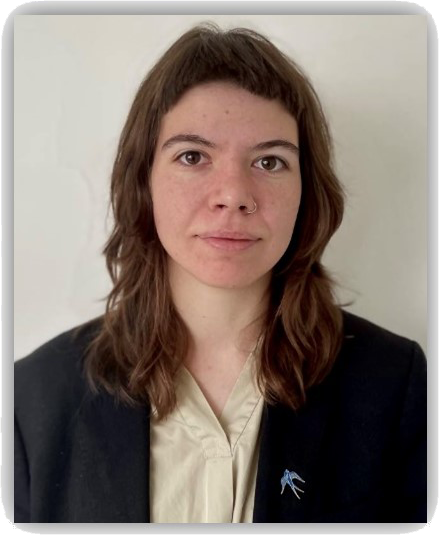In this interview, Elizaveta Yachmeneva (EY) and Thomas Carey-Wilson (TCW) describe a joint research study into some of the “frontier technologies” that are driving the global digital economy. These include Blockchain, 3D printing, IoT, AI and 5G. These digital technologies contribute significantly to economic growth which is one factor in driving demand for technical standardization. According to their research, standardization addresses the need for greater interoperability and sets the tone for market competition and innovation. Findings from the study carry important implications for national governments, standards development organizations (SDOs) and the members that participate in standardization activities.
Q1: Would you begin with some introductory information about yourself and your role in this study?
EY: We were doing this project in collaboration with the PETRAS National Centre of Excellence for IoT Systems Cybersecurity as part of our Master of Public Administration course at University College London (UCL). I was a Project Lead, and Thomas was our Editor and Head of Analytics. Today I work as independent researcher for several NGOs, mostly focusing on the matters of internet censorship and cybersecurity for journalists, activists, and NGOs in Commonwealth of Independent States (CIS) countries. 

TCW: I currently work as a business development consultant for the Open Data Institute (ODI) in London. The ODI works with international companies across sectors to build an open and trustworthy data ecosystem with various training, consultancy, and research-based solutions.
Q2: What kinds of issues motivated the study and why are they important?
EY: There are a couple of issues to consider. On the one hand, the standards development process sets a basis for further innovation and globalization of technologies. On the other hand, it allows some companies and governments to lead the technology development roadmap and gain some competitive advantage on the international market, in the same way as patent-making. Within this research we were trying to understand how different stakeholders engage with SDOs. We also wanted to study what might be beneficial policy implications for government agencies to make the standard making process more transparent and diverse.
Q3: How did you approach the study in terms of methodology and scope?
TCW: Firstly, for our study we looked at data from SDO portals online and conducted interviews with representatives from these SDOs. For our analysis, we chose to interpret this data through a methodology of policy coordination from international relations theory. Basically, this looks at the way preferences are formed by multiple actors, from governments to private firms, at the international level and how this motivates actors to coordinate or compete in their actions. We found that this was a fascinating lens through which to view participation in standards development because, in recent decades, there has been a proliferation of non-state actors bearing influence at the international level. Standards development is quite under-studied as an arena for this kind of behavior.
We chose to study standards for three emerging digital technologies - IoT, AI and 5G. This was not only due to how “current” they are, but also because of their technical overlaps. Our initial thought in this regard was whether or not this technical overlap would lead to similar communities of actors participating in the development of their standard, and why. In short, what does this say about the intersection of technical, economic, or even geopolitical interests in standards development. We chose to study three SDOs - oneM2M, 3GPP and the British Standards Institution (BSI) primarily because of their repeated citation in literature with reference to standardization for these technologies. We arrived at the former two via several mentions through ITU literature. Secondly, accessibility of data on who is participating in their processes was a significant factor as a major necessity for our analysis.
This itself raises an interesting point about the visibility of SDOs in media and whether this is representative of the chosen bodies “influence” and/or “power”, or whether there were perhaps less-publicized options with more “closed” data available which would have yielded different results.
Q4: What factors led you to choose oneM2M for the IoT portion of the study?
EY: We considered several SDOs for the study. Among them oneM2M had one of the most open archives which we could use for data analysis. At the same time, oneM2M is focused on interoperability of IoT technologies and is highly connected with the 5G and AI industries which we were also covering within our study. We decided that this would present a great opportunity to connect our case studies in one research effort.
Q5: What are the key findings from your investigation?
TCW: There are several findings from this study. One is that there is a hierarchy of national-to-global level SDOs through which similar or even identical standards development processes are promoted. Next, we observed the formation of communities of experts using a particular set of technical terminology which can exclude the participation of newcomers.
Several major telecommunications players were identified as participating the most across standards for all the emerging technologies. Many prominent organizations were missing, notably those such as Amazon and Microsoft that are large enough to produce de facto standards in their ecosystem. Another part of this finding was a lack of companies participating from the Global South.
Finally, we found that representatives from many of these companies were not explicitly engaged in geopolitics or any national-level political interests. Instead, they were more invested in the technical pursuit of interoperability and/or the economic drive for market growth.
Q6: Why do you think that the standards development processes you studied are organised hierarchically?
EY: We have found that standards development processes are highly hierarchical, at least in part due to the globalized nature of standards development: some SDOs are aiming to scale certain smaller (e.g., national level) technical standards to the global level. They can do that only through the hierarchy of SDOs from a national (e.g., ETSI, TIA, CCSA) to a global (e.g., ITU-T, ISO) level. This hierarchy gives a very structured top-down approach to standard-making. In one sense, it facilitates the transfer of knowledge and technology between different countries. However, it also excludes most Global South regions, such as Africa and Latin America, from the global standard development process due to the absence of local standard development infrastructure and local national SDOs in these regions.
Q7: You say that representatives were participating for technical and economic reasons, but did you discover any geopolitical influences?
TCW: There were no explicit geopolitical influences, but interestingly we found the traces of geopolitical trends across the board. As Elizaveta mentioned, countries from the Global South seemed to be missing from standards development activities. But, more affirmatively, companies from countries such as Korea and Japan whose trade policies emphasize the manufacturing and export of electronics and information technology participated a lot compared to the most visible superpowers like the USA, China, and the EU. In this way, while there was no recognition by SDO representatives that geopolitics was a factor in the particulars of standards development, there is an unintentionally geopolitical reflection in participation.
Q8: What implications and actions should businesses and governments draw from this study?
TCW: Businesses should recognize the importance of standardization as a part of their toolkit in opening markets. That is because greater interoperability, even in the case of proprietary technologies, can unlock value in the early stages of emerging digital technologies. However, in accordance with this, there should be the recognition that effective participation in standards development processes is a unique skill. It requires access to a certain vernacular and understanding of SDO formats. But, once acquainted with these organizational norms, it becomes easier to engage with other SDOs because processual formats between organizations are often similar.
For governments, there should be a better understanding of standards development processes in multi-stakeholder SDOs and industry alliances. That is because they are not only venues for technical discourse, but also an arena to express complex and often economic and even implicit political trends. For instance, within many SDOs, we saw this through the lack of direct engagement with companies from the Global South, a finding which reflects the path-dependent placement of global internet architecture and governance as mainly located in the Global North. Of course, global SDOs like ITU-T are instrumental in bridging this gap. Nevertheless, geographic tendencies like this shed light on how much decision-making in standardization is still mainly driven by centers of economic power.
Q9: You mentioned “de facto standards” earlier. Do you think de facto standards should play a role in the global hierarchy of SDOs that you identified?
EY: Standards can be developed not only within SDOs, but also as open source or de-facto standards, which sometimes become a real alternative to global standards. In our study we only examined formal standards developed within national and international SDOs. In discussions, many of our interviewees mentioned the ecosystems of Amazon and Microsoft as an alternative to the interoperability standard developed by oneM2M. While their ecosystems are quite widespread, and therefore influential, any suggestion of them as an ‘alternative’ for global standards from SDOs and industry alliances would be quite disruptive. That is because such standards wouldn’t be very sustainable without consensus between diverse stakeholders from multiple regions. In this way, consolidating standards nurtured and shaped by a single market entity could enforce monopolies and lead to fragmented markets in the long run.
From our point of view as researchers, it would be interesting to follow the interactions between global standards, de-facto and open-source standards to see how they contribute to each other and how the unique technical and/or economic communities around different technologies are formed across industries and different types of standards.
Q10: Where can our readers look for more information out more about your study?
The study is due to be published later this year by PETRAS, and the format is yet to be determined. Here is the website to watch. It contains lots of information about IoT systems and cybersecurity: https://petras-iot.org/
